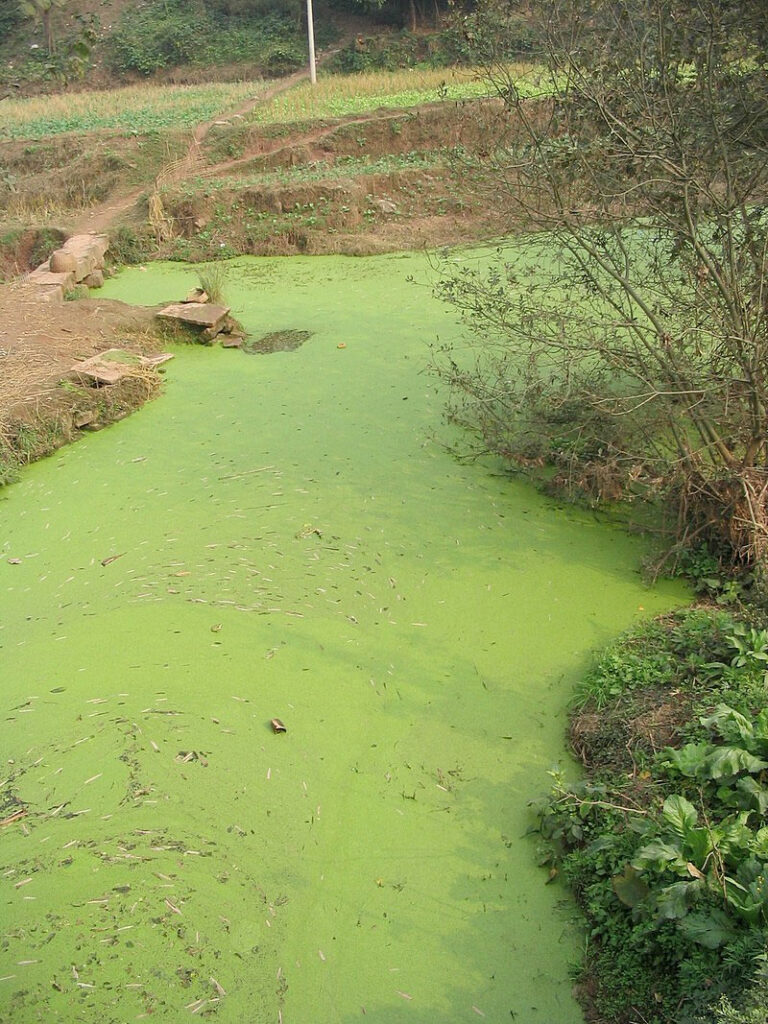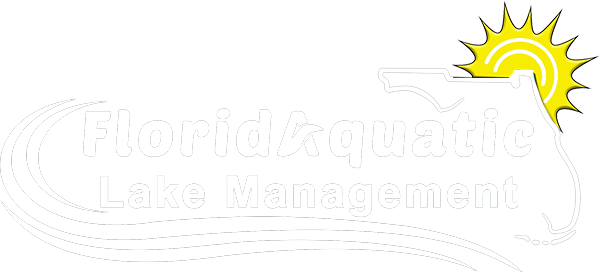Algae Control
Algae are in the plant kingdom, but technically they are not plants. A diverse group of organisms, algae is able to survive even the harshest habitats. From the Arctic Circle, to the dry desert or boiling springs, these organisms find a way to extract enough from their environment to live.
Algae is an indication of the condition of the ecosystem and occurs naturally. Just the presence of a species can indicate the type and amount of nutrients present.
Algae’s size can be microscopic or meters long, and from single-celled to complex organisms that rival large plants. These organisms may look like true plants, but unlike plants, algae do not have roots, true stems or leaves.
Algae is what makes the water green in Florida’s freshwater. That does not make it necessarily undesirable since algae is essential to the ecosystem and to life as we know it. Algae are a primary component of the food web, providing food for all types of animals, including fish, insects, zooplankton (microscopic animals), mollusks, and humans.

What causes an algae bloom?
In Florida, chlorophyll (an indicator of algae presence) concentrations of more than 40 micrograms per liter are called an “algae bloom”. Algae blooms occur when algae grow quickly and densely, often in warm, nutrient-rich waters. Although these blooms are natural, many people don’t like their appearance. Blooms associated with phytoplankton (microscopic algae) turn the water a certain color. Algae blooms are commonly green, but they can also appear blue-green, brown, red, or violet. Other blooms form clumps or dense mats that float on the surface of the water, grow attached to the bottom, or attach to plants.
Algae need light and nutrients, such as nitrogen and phosphorous, to grow. The level of growth or productivity often depends on the amount of nutrients in a system. Classification for the productivity of a system ranges from oligotrophic (low productivity and nutrients) to hypereutrophic (very high nutrients). Since algae need light to photosynthesize, light penetration into the water is another limiting factor.
Blooms can have far-reaching effects on the environment. Some become so dense they deplete oxygen levels. Decreased oxygen can cause hypoxia (low oxygen) or anoxia (no oxygen) and other organisms that use oxygen, such as fish, become stressed and may die. Other blooms can release toxins that are harmful to animals.
There is a general consensus that urban development, and the subsequent increase in nutrients, has increased the frequency and intensity of algal blooms in many regions of the world.
Controlling Algae Blooms
The most direct way to control algae blooms is to reduce the availability of nutrients. You can reduce nutrients by limiting fertilizer, keep grass clippings out of the water, keep trees trimmed so leaves and limbs do not go into the water, and remove pet waste. Chemical or biological treatments are helpful alternatives.
Chemical Treatments
Copper sulfate and chelated copper compounds are common chemical treatments to control algae. Chemical compounds that block the light required for algae growth, such as lake dyes, are also used to control blooms.
Biological Treatments
The main biological treatment used today is fish stocking to control submersed and floating algae. Grass carp are mainly used for aquatic weeds and attached submersed algae, such as Nitella sp., and Chara sp. Although they do not readily eat filamentous algae, grass carp will eat Lyngbya. The silver carp has been an effective control for filamentous algae, including blue-green algae.
Both species of carp are non-native, and there are many restrictions to using them for weed control purposes; some states prohibit their use altogether. When they are allowed, use is restricted to triploid grass carp. Triploid grass carp have an extra set of chromosomes that render them sterile, prohibiting reproduction if the fish escapes into open water.
These fish are an economical choice and have proven effective in controlling the growth of algae in some circumstances. However, outcomes have been mixed when using carp to control algae blooms. Grass carp may consume beneficial vegetation, and leave the nuisance algae they were intended to eat. Research is being conducted on how and why feeding preferences change over time and vary from one lake to another.
Physical Treatments
Physical treatments for algae in ponds include aeration. While aeration does not kill or remove algae from the water, it stirs and oxygenates the water, and can shift conditions from toxic and foul-smelling blue-green algae to preferred green algae species. The resultant algae population is usually not as dense or toxic to other organisms in the ponds.
Mechanical Treatments
Lyngbya algae typically grows in dense mats at the bottoms of nutrient-enriched lakes and spring-fed systems. During photosynthesis, these mats produce gasses that cause them to rise to the surface. Winds pile the algae mats, sometimes several acres in size, against shorelines or in navigation channels. Harvesters, such as the Truxor that FloridAquatic utilizes, are used to skim dense mats of blue-green algae from the water surface.

